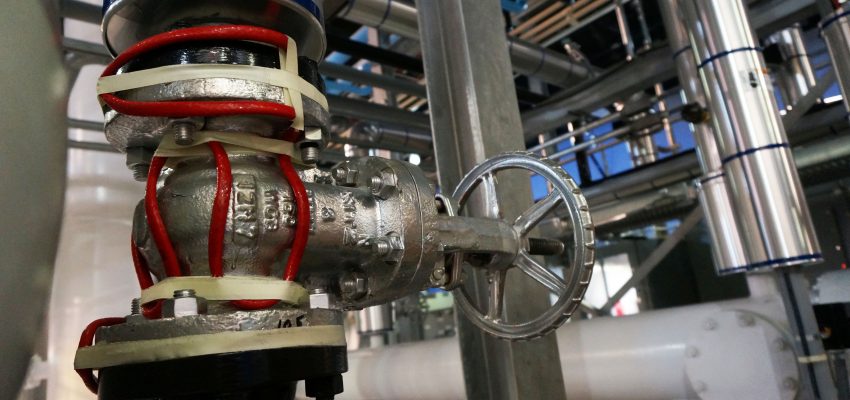“Electrical trace and thermal insulation have been used in industrial plants and other processes for decades. There is a widespread understanding that heat loss can be minimized through a combination of these two solutions. meantime, there are some types of failures that, when occur, result in a lot of downtime.“
Here are some of the most common causes responsible for problems in electrical dash installations.:
- Compromised isolation;
- Improper reinstallation after temporary insulation removal for maintenance;
- Terminals installed incorrectly;
- Earth faults and/or short circuits.
While there are many other causes of failure., these are the most common. This article will explore each of these causes in a little more depth and provide an understanding of what can be done to prevent them..
1) Compromised Thermal Insulation
If the thermal insulation system is wet, damaged or compromised in any way, the system as a whole will lose a lot of efficiency, even if the electrical dash is working properly.
Compromised sheet metal insulation protection is as common as it is dangerous, and facilities housing heat tracing systems are full of workers. Although accidents and negligence cases are preventable, they are bound to occur. Since the protection of external insulation is compromised, this is no longer effective in protecting against heat loss.. A loose protective sheet will allow moisture to penetrate, making it useless. With ineffective insulation, a heat tracing system can no longer do what it was designed to do.
Once thermal insulation is compromised, it may take a long time to fix it. when time is of the essence, going straight to the source of the problem is vital.. However, in normal business operations, and especially during heavy maintenance work, it can be difficult to find time to reset the insulation correctly.. These situations often end up falling to the bottom of the priority list..
2) Improper resettlement
Removable insulation jackets are a sensible solution to ongoing problems with damaged insulation. Removable jackets are easy to install, quick to fix and, in theory, should be simple to reapply to an electrical trace system..
an old question, However, is that, when it is necessary to remove insulation and electrical trace, putting them back correctly can be time-consuming and frustrating.. both elements, the thermal trace and the insulation jacket, are separate parts that must be reinstalled correctly.. Repairs and maintenance that require the removal of the insulation and electrical trace system leave a great deal of scope for incorrect replacement, if this replacement, indeed, happen.
In this regard, It is important that your company has a heating and insulation service partner that works with an easily replaceable material (of the insulation jacket) and that has durability.
3) Terminals Installed Incorrectly
Terminations of any electrical system, when installed incorrectly, are a constant risk. In the case of electrical tracing systems, it takes good technical work to assemble the termination properly, that is, requires a trained and qualified professional.
It is recommended that a check be carried out after any type of intervention in the terminations (or reinstallation after maintenance). Besides that, it is recommended to implement a quality control of these terminations regularly to ensure their functioning.
There are many resources for installing terminations. Heat trace manufacturers provide full instructions or you can also check with your heating and insulation partner.
4) Earth faults and/or short circuits
Earth fault tripping can be caused by several different factors, including, but not limited to:
- Short caused by damaged heating cables;
- Heat trace circuits very large in length;
- Underrated Circuit Breakers;
Then, what is the correct procedure to determine the cause of a known earth fault?
The first step is to physically inspect the electrical trace circuit. The entire length of the installation must be observed to check for signs of physical damage. It is important to inspect the power supply and seal termination kits for signs of shorts..
Then, the power to the affected circuit must be removed.. In sequence, use a megger to perform the megger test or check the ground resistance. Most manufacturers recommend using a megger with at least 500 VDC. If the electric trace circuit fails, make sure you also connect the thermal trace junction box power wire to the circuit breaker as well.. This will ensure that there are no additional shorts on the power cord..
The self-regulating electrical trace has a current spike for a short period of time at star-up. This brief inrush can be two to three times the nominal amperage. your circuit of 15 amps can pull 30 amps or more on a circuit breaker. 30 amperes.
to solve this, it is possible to install an electrical trace controller with a soft start feature that will utilize thermal magnetic circuit breakers. These types of units can handle a much larger inrush for a few cycles., what could solve the problem quickly. Installing a higher amperage rating circuit breaker or reducing heat tracing run can also help.
How insulation and other electrical equipment can fail over time, consistent use of a mego meter is vital for any facility that relies on electrical trace for production. Although some might argue that voltage and OHM checks are sufficient, a megometer is the The only true way to test an electrical trace circuit to ensure it is resistant to a ground. These are important tests, but do not provide the necessary guarantee of a megometer..
Finally, manufacturers recommend that every heating cable (electric trace) when received, be checked again in the following moments:
- When first received at installation, a megger must be used to check the integrity of the insulation to ground., still in the box. In addition to this test, we have followed instructions to perform the megger test on the electrical trace. Most manufacturers provide a record with the cable.. It is important to make sure the observations are recorded and dated.
- During on-site installation. Once the electrical trace is cut to length and installed at its final destination, it needs to be measured and the readings recorded.
- After the tracing circuit is isolated, but before the final termination.
- During preventive plant maintenance events, e, if applicable, some time (a few months are recommended) before the coldest weather.
Want to reduce your downtime, protect your instruments and eliminate the need for costly alternative heating solutions?
Tayga offers complete solutions so you can protect your production and materials. Meet our heating and insulation products and find a custom solution for your entire system.

Solutions designed by experienced engineers to make it easy to protect your business. Our electrical tracing system is designed and implemented taking into account all of the above., giving your company greater peace of mind and long-term reliability.
Contact us from the site (click here), fur e-mail daniel@taygahs.com or at phone and Whatsapp (21) 9.8819-3687
It will be a pleasure to get to know your business and help with our customized energy efficiency solutions!
We also recommend reading our materials on the heating and insulation systems implemented by Tayga (just click and you will be redirected):


